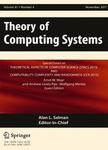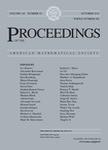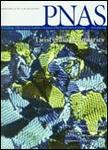版权所有:内蒙古大学图书馆 技术提供:维普资讯• 智图
内蒙古自治区呼和浩特市赛罕区大学西街235号 邮编: 010021
T=题名(书名、题名),A=作者(责任者),K=主题词,P=出版物名称,PU=出版社名称,O=机构(作者单位、学位授予单位、专利申请人),L=中图分类号,C=学科分类号,U=全部字段,Y=年(出版发行年、学位年度、标准发布年)
AND代表“并且”;OR代表“或者”;NOT代表“不包含”;(注意必须大写,运算符两边需空一格)
范例一:(K=图书馆学 OR K=情报学) AND A=范并思 AND Y=1982-2016
范例二:P=计算机应用与软件 AND (U=C++ OR U=Basic) NOT K=Visual AND Y=2011-2016






Abstract: Perhaps the two most basic phenomena discovered by the recent application of recursion theoretic methods to the developing theories of computational complexity have been Blum’s speed-up phenomena, with its extension to operator speed-up by Meyer and Fischer, and the Borodin gap phenomena, with its extension to operator gaps by Constable. In this paper we present a proof of the operator gap theorem which is much simpler than Constable’s proof. We also present an improved proof of the Blum speed-up theorem which has a straightforward generalization to obtain operator speed-ups. The proofs of this paper are new; the results are not. The proofs themselves are entirely elementary: we have eliminated all priority mechanisms and all but the most transparent appeals to the recursion theorem. Even these latter appeals can be eliminated in some “reasonable” complexity measures. Implicit in the proofs is what we believe to be a new method for viewing the construction of “complexity sequences."




电话和邮箱必须正确填写,我们会与您联系确认。
版权所有:内蒙古大学图书馆 技术提供:维普资讯• 智图
内蒙古自治区呼和浩特市赛罕区大学西街235号 邮编: 010021

暂无评论